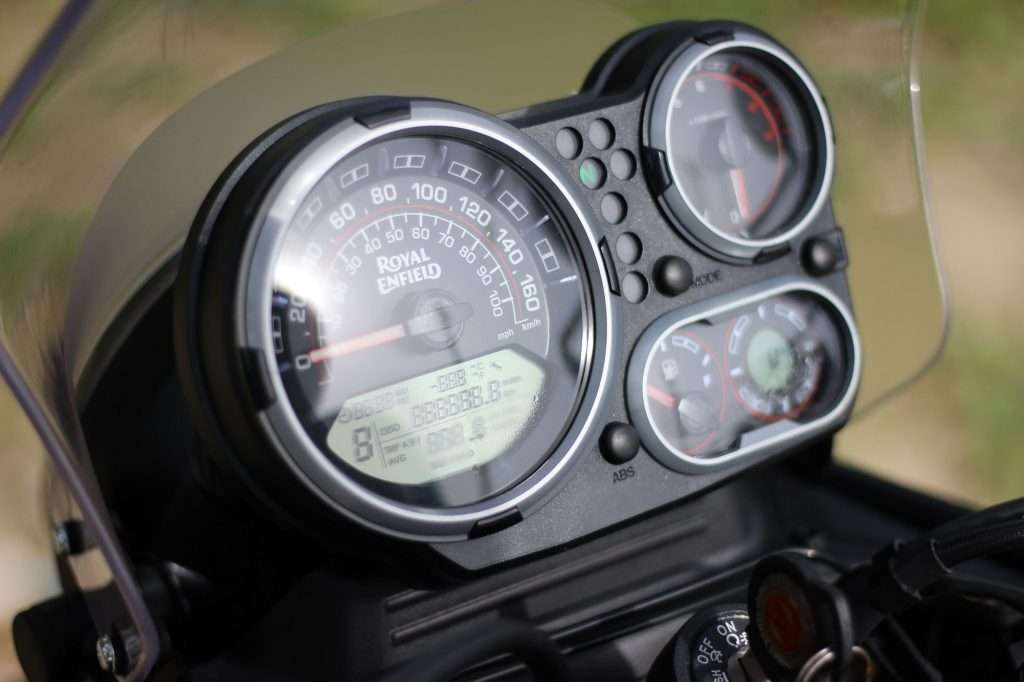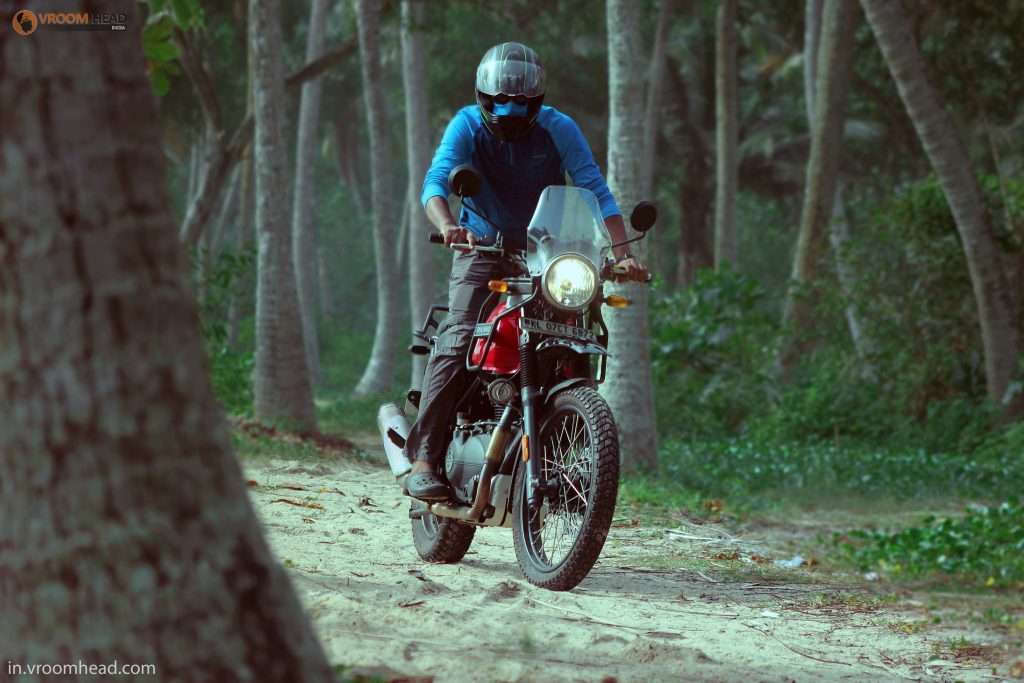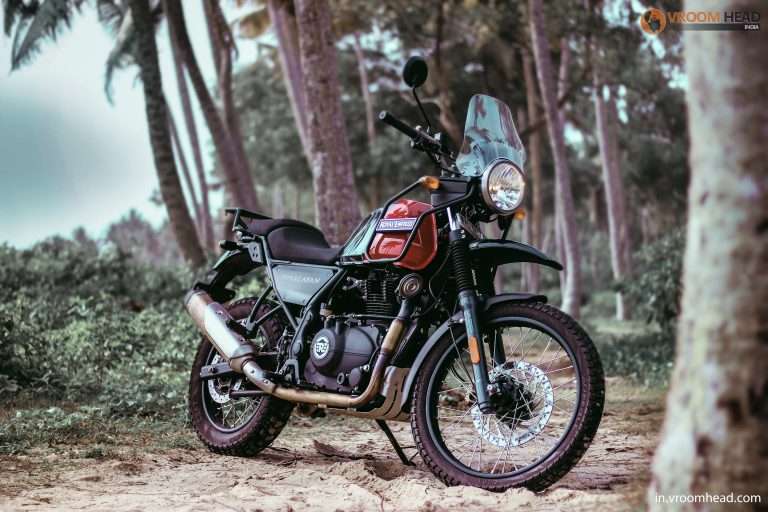To handpick the changes, I decided to take the Royal Enfield Himalayan BS6 on a 200km road trip and to a beach holiday. Here’s what I have to say …
Words And Photography: Neeraj Padmakumar
The Royal Enfield Himalayan had made its debut back in 2016. The bike had then turned many heads pan India and had even flaunted the tag of being the country’s most affordable ADV motorcycle. BUT, there was a second side to the coin as well. The Himalayan, which had originally debuted as a BS3 offering, got involved in a series of events where its ‘serious compromises in quality’ were exposed, leading to a decline in the customer demands. The BS4 model that had followed too had to face a similar fate. And years past, here it is… the BS6 RE Himalayan…
What’s new in the design?
Not much has changed on the design front. The basic shape remains the same. It is still rugged and ruthless. There is no specific sophistication onboard, worth commenting on. However, there is a set of new paint schemes on offer, all of which look stunning on the bike. The BS6 Himalayan comes in 6 different shades, spread across three variants, that tend to differ in just the paint. Three of these shades are absolutely new and look good. Fancy spotting a second change in the looks, and you will end up on the slight protrusion on the exhaust, which happens to be the mechanism for reducing the emissions as part of the BS6 conversion. Save for these, the overall design is indeed familiar and strictly unchanged.

The basic shape and layout of the instrument cluster remain the same while the color schemes of the same have been revised. It comprises of a large, readable analog speedometer, tacho and fuel gauges. There is even the familiar digital compass present, the accuracy of which still remains dubious. The small digital display in the cluster shows all the priceless information such as the trip readings, odo, average fuel economy, clock, gear position indication, etc, and even has warnings for the side stand. The overall look and feel of the instrument cluster have improved.

Let me now tell you about something that the previous generation had missed out on, but the 2020 model has intact- the Hazard lamps! Yes, the BS6 Himalayan gets the Hazard lamp function neatly integrated into it, doing fair justice to its ADV genes. The switch for this has been given on the right handlebar and above the engine start switch.
What’s new in the mechanicals?
The key mechanical change has happened in the engine. The BS6 compliant mill, though still the same 411cc, single-cylinder, fuel-injected, air-cooled unit, has had a minute drop in power, with the figures now tipping at 24.3 hp and 32Nm. There are good amounts of low end and mid-range torques available, and the delivery is pretty much linear too. The 5-speed gearbox still has firm-but-precise shifts.
Has The Build Quality Had Leaps In The BS6 Himalayan?
Well, this is kind of a tricky question to answer, to be very honest. The plastic quality, paint quality, and the overall material quality seem to have been drastically improved in the new vehicle. However, it is still too early to comment on the overall strength and quality of the Himalayan as many of the previous incidents illustrating the poor build had happened over the course of time.
(Breaking the bike to shed light on the build quality is the last thing I would wish to do on this ride !) But I can tell you one thing for sure. I had been riding the Himalayan in a series of weather conditions- sun, rain, and some beach-specific salt winds. The all-new Himalayan, despite having the track of being involved in such instances in its bygone generations, did not land me in any sort of trouble during the testing span.

What’s It Like To Ride One?
To find out, I took the Himalayan on the 200 km road trip and to my weekend beach holiday. The planned route included some really good stretches of the highways, pocket roads, broken patches, unpaved countryside pathways, and some beach dunes.
The RE Himalayan has a seat height of 800mm, very much in keeping with the height of the average Indian. You won’t have tough times getting on and off the bike. Also, it is very much easy and convenient to stand up on the footpegs and ride on terrains. The tank still has those beautiful ‘dents’ to accommodate your knees with proper grip during riding.
The overall ergonomics favor long-distance touring. There is a large 15-liter fuel tank. Also, one will not get tired of riding the Himalayan continuously for an entire day. I could munch as many as 100 kilometers in a stretch before stopping for a coffee.

The Himalayan’s BS6 heart feels very much refined. The vibrations are now nominal. Thanks to the RVMs that do not vibrate, I could do the highway runs the way they are meant to be. 60-85km/h speed range is indeed the sweetest for this mill. However, you will find the engine stressed only post 100 km/h. I managed to do about 105 km/h (indicated ) on the highways.
Three-digit speeds do not, however, inspire much confidence on this bike. The windscreen does shield you from the blast on speeds of up to 90-95km/h. The suspension is well-tuned. The tires offer more grip on terrains than on roads. Things seem fine in the first go, but I tell you, speeds north of the smallest three digits are not desirable on this motorcycle.
With a weight of 199 kilograms, which happens to be around 5 kg more than its predecessor, the Himalayan BS6 is indeed a heavy bike. While this invokes more confidence on highway cruising (trust me, the crosswinds cannot do a damn to the new Himalayan), it does turn out to be a hindrance while trying to play with the bike on the terrains.
The suspension is something that I have always loved on this bike. With travels of 200 mm at the front and 180 mm at the rear, these shocks are absolutely phenomenal. They swallow the potholes like anything! I felt like giving the Himalayan a tight hug after riding it through some broken patches and unpaved paths. Damn, these shocks are absolutely fab…
The bike gets 300mm discs at the front and 240mm units at the back. These offer decent bites in most cases. However, I have had situations during my ride when I ended up wishing for a bit more bite from the rear discs.

The ride had finally reached its climax. I was finally at my much craved-for beach holiday weekender. Up ahead were the loose golden sands, kissed by the green sea, lotsa rocks in case I wanna go ‘bouldering’ with the Himalayan, and the blazing sun to complete the picture. Now was the time to unleash the offroader genes of the bike. With an evil grin, I took it to the beach…
The Himalayan has a ground clearance of 220mm. I had to go over some rocky paths with giant unevenly shaped boulders reaching out to the tires many a time and not once did I manage to scratch the underbody. That is the level of capability this bike offers. The Himalayan BS6 gets a switchable ABS, unlike the bike it replaces. You can turn the dual channel ABS ON/OFF against will by long pressing the button on the centre console.
Past the rocky patches, were some serious stretches of loose sand. It was obviously time for me to have some fun. Dressed in casuals and without any riding gear handy, except for the helmet, I set out to do the sand bashing. With the ABS turned off, the Himalayan dances to your whims. Sliding this motorcycle is now a piece of cake. The only concern here is the 5 kg weight gain, and I regret not having a praiseworthy beef!
BS3 Himalayan Vs BS4 Himalayan Vs BS6 Himalayan?
Fancying a comparo between the three? Well, here’s what I have to say:
- The BS3 version had been much scorned for its low reliability. The BS4 iteration was a tad better in terms of reliability. It is still too early to comment on the reliability of the BS6 model though.
- The BS3 version had a carburetor doing the job in it. The BS4 version, however, came with Fuel Injection. FI remains unchanged in the BS6 guise too.
- The shifts were quite hard and jerky on the BS3 model. The improved version of the same that we first saw on the BS4 model has been carried over to the BS6 version as well.
- The BS3 model had power figures of 25hp. In the BS4 guise, the same dipped to 24.8 hp and the BS6 version has them at 24.3 hp. This drop in power definitely shows up in the ride.
- 0-60kmph comes in 4 seconds on the BS3 version. It took me around 5.2 seconds to do the same on the BS6 version.
What We Like ?
- Refinement levels
- The new paint schemes
- Suspension
- Switchable ABS
What We Don’t Like ?
- The clutch feels too heavy.
- The fuel gauge literally plays around and returns false values many a time. You really need to be careful with the fuel levels.
- The hike in weight.
Price & Mileage ?
On our test, the vehicle returned an average fuel economy of 24.5kmpl. However, RE claims to offer up to 30 kmpl on highways. The BS6 Himalayan is priced at INR 1.87 lakh (ex.showroom) for the base variant. The same would cost you around INR 2.32 lakh on road.
Have any more queries? Shoot as comments !
ALSO READ:
- 2020 Jaguar XE Review: I Drove A Jaguar XE P250 SE For Half A Thousand Kilometres. Does It Live Upto The XE Nameplate?
- 2020 Kia Carnival Review: Here Is All You Need To Know About The MPV!
- Hero Maestro Edge 125 Review: What Is It Like To Live With India’s First Fuel Injected Scooter?



